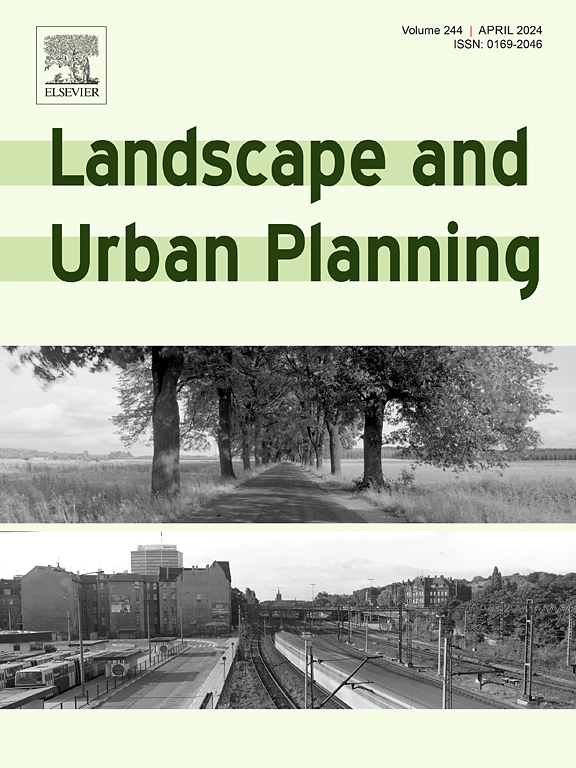Stakeholder networks underpinning the transformative practice of urban roadside verge greening
IF 7.9
1区 环境科学与生态学
Q1 ECOLOGY
引用次数: 0
Abstract
Understanding how social networks facilitate the adoption of marginal urban greening actions can provide valuable impetus to guide transformative change in urban landscapes, which are under multiple social and environmental stressors globally. Social network mapping of resource flows, particularly information sharing, is one tool for understanding the emergent and transformative urban greening practice of landscaping roadside verges with native and/or waterwise plants. Urban roadside greening in Perth, Western Australia, while formerly prohibited, is now increasingly accepted and advocated for by multiple sectors, as a nature-based solution that provides multiple ecosystem services and social-ecological benefits. This study drew on participatory stakeholder mapping to examine the stakeholder network of non-residential actors connected with verge greening. Using social network analysis, we found almost 80% of resource flows across a large network of diverse stakeholders were information related. We identified top providers, recipients, brokers, as local and state governments and peak bodies, and, to a lesser extent, key individuals, community groups, nurseries, residents and environmental consultants and developers. The network was characterized by four dominant and five smaller communities, which we classified into a typology based on composition, structure (quantitative material), and contextual knowledge, including function, dominant roles and responsibilities (qualitative material). These were the ‘planning and development hub’, ‘governance enablers’, ‘water efficient hub’, ‘greenspace hub’. The five smaller communities were ‘advocates’, ‘transformers’, ‘new vision’, ‘local networks’ and ‘early adopters’. The network analysis provides evidence of communities that transcend traditional sector or actor silos, commonly converging around local governments as key knowledge brokers.
支持城市路边边缘绿化变革实践的利益相关者网络
了解社会网络如何促进边缘城市绿化行动的采用,可以为在全球多重社会和环境压力下指导城市景观的转型变化提供宝贵的动力。资源流动的社会网络映射,特别是信息共享,是理解用本地和/或水生植物美化路边边缘的新兴和变革性城市绿化实践的一种工具。在西澳大利亚州的珀斯,城市路边绿化虽然以前是被禁止的,但现在越来越多的人接受和倡导,作为一种基于自然的解决方案,可以提供多种生态系统服务和社会生态效益。本研究利用参与式利益相关者映射来研究与边缘绿化相关的非住宅行为者的利益相关者网络。通过社会网络分析,我们发现,在由不同利益相关者组成的大型网络中,近80%的资源流动与信息相关。我们确定了顶级的提供者、接受者、经纪人,如地方和州政府和高峰机构,以及次要的关键个人、社区团体、托儿所、居民、环境顾问和开发商。该网络的特征是由4个主要社区和5个较小的社区组成,我们根据组成、结构(定量材料)和语境知识(包括功能、主导角色和责任(定性材料))将其分类为类型学。这些是“规划和发展中心”、“治理推动者”、“节水中心”、“绿色空间中心”。五个较小的社区分别是“倡导者”、“变革者”、“新视野”、“本地网络”和“早期采用者”。网络分析提供了超越传统部门或行动者筒仓的社区的证据,这些社区通常聚集在地方政府周围,作为关键的知识中间人。
本文章由计算机程序翻译,如有差异,请以英文原文为准。
求助全文
约1分钟内获得全文
求助全文
来源期刊

Landscape and Urban Planning
环境科学-生态学
CiteScore
15.20
自引率
6.60%
发文量
232
审稿时长
6 months
期刊介绍:
Landscape and Urban Planning is an international journal that aims to enhance our understanding of landscapes and promote sustainable solutions for landscape change. The journal focuses on landscapes as complex social-ecological systems that encompass various spatial and temporal dimensions. These landscapes possess aesthetic, natural, and cultural qualities that are valued by individuals in different ways, leading to actions that alter the landscape. With increasing urbanization and the need for ecological and cultural sensitivity at various scales, a multidisciplinary approach is necessary to comprehend and align social and ecological values for landscape sustainability. The journal believes that combining landscape science with planning and design can yield positive outcomes for both people and nature.
 求助内容:
求助内容: 应助结果提醒方式:
应助结果提醒方式:


